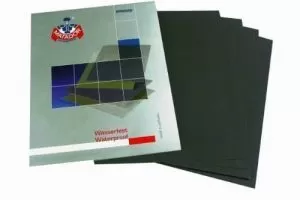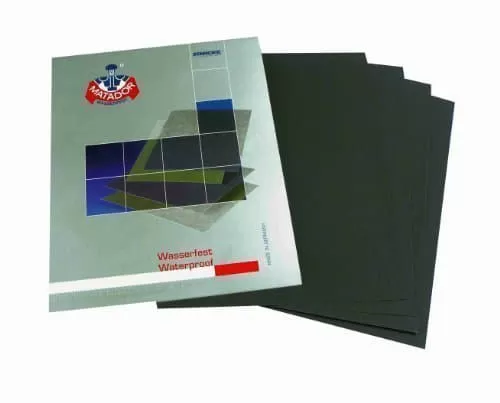Types, Prices and Diferent Grips of Sandpaper
What Is Sandpaper ?
Sandpaper is the name given to a type of rigid paper that is covered with abrasive material. Despite its name, in the current form of manufacture, the material used on the surface of the paper is composed of particles of glass, aluminum oxide, silicon carbide and granite instead of sand.
What Is Sandpaper Used For ?
Sandpaper is used to soften the surface of an object. The purpose of sandpaper is to smooth the surface area of a workpiece, either as a finishing touch or in preparation for future work.
Water Sandpaper. An Example is Sandpaper 2000
In terms of terminology, “water-based sandpaper” is not the commonly used name for this type of paper. It is generally referred to as wet and dry paper.
Metal Sandpaper
The Special Sandpaper for Perfect Sanding of Metal Objects.
Options You Have When You Buy It
Sandpaper is available in square sheets, rolls or pre-cut pieces. Sandpaper comes in different sizes, and as mentioned above can be purchased in square sheets, rolls or pre-cut pieces.
Be sure to buy sandpaper that is large enough to cover the entire base of your sander, with enough debris to fold over either end and hold it in place. Pre-cut pieces of sandpaper are often called sanding sheets or sander flaps. These are cut into the correct shape of a particular hand sander and are ready to be attached to the base of the tool.
Pre-cut sheets are convenient for users who want to save time during sanding jobs, and can be purchased at many DIY stores and online retailers.
Sandpaper should be removed from the sander when it wears out. These sheets are also reusable, as they are double sided, meaning that once one side has worn down, they can be turned and reused. Once the sanding sheet is completely worn, it should be removed from the sander and replaced with a new one.
Some sanding papers can be used wet. Some sandpapers are designed for both wet and dry use, which means the sandpaper can be soaked in water before sanding begins.
As a result of the lubrication provided by the water, dust can be kept to a minimum and any dirt can be removed in order to increase the quality of the surface finish. This type of sandpaper is commonly used when rubbing vehicle bodies during repairs, to prepare and re-spray.
Sandpaper Texture:
The grain size of a sandpaper means the size of the particles that are embedded in the sandpaper.
Particles are measured in microns. A micrometer, also known as a micron, is one millionth of a meter, or one thousandth of a millimeter.
Grit Size Measurements on Sandpaper
Grain size can be measured in terms of two standards, which are the Institute of Coated Abrasives Manufacturers (CAMI) and the Federation of European Abrasives Producers (FEPA).
Both standards separate grit sizes into two categories: macro grits and micro grits. Sanding with the wrong sandpaper can damage your workpiece.
Macro Grit Grains
Macro grit sandpaper. Sandpaper sandpaper grit sizes can be classified into the following subtypes.
Extra Thick
Extra coarse sandpaper can be used to sand wood floors. Extra coarse grains are larger in size and are used for rapid removal of all types of materials, especially the initial sanding of an object, such as a hardwood floor.
The average diameter of extra coarse sand would be between 530 and 1815 microns.
Thick
Coarse sandpaper can be used to remove unwanted materials. Coarse grains are designed for rapid removal of unwanted material.
The average diameter of a coarse grain is between 336 and 425 microns.
Medium
Medium sanding paper can be used to remove varnish from wood. Medium sands are designed for gentle removal of varnish or for sanding bare wood in preparation for a finish.
The average diameter of a medium grain is between 190 and 265 microns.
Fine
Fine grain sandpaper used to remove water stains. Fine grains are not suitable for removing varnish or paint from wood. They are often used to sand bare wood in preparation for a finish. They are also used to remove water stains from wood.
The average diameter of fine sand is between 115 and 162 microns.
Very fine
Very fine macro sandpaper used to sand bare wood. Very fine macro grits are only used for sanding peeled wood.
The average diameter of a very fine macro grain would be between 66 and 100 microns.
Macro Grain Sizes Classified by CAMI and FEPA
There are several grain levels available within the macrograin subtypes, and these are classified differently according to CAMI and FEPA standards. Below is a table showing how each standard classifies sizes.
CAMI FEPA
- Extra thick 24, 30, 36 P12, P16, P20, P24, P30, P36
- Thickness 40, 50, 60 P40, P50
- Medium 80 P60, P80
- Fine 100, 120 P100, P120
- Very good 150, 190, 220 P150, P180, P220
Micro grits
Small grain sandpaper. Sandpaper grit sizes can be classified into the following subtypes.
Very fine
Use very fine-grained sandpaper to sand between coats. Very fine micro grit sandpaper is used for the sanding finish between consecutive coats, e.g. between a coat of paint and a varnish.
The average diameter of a very fine micro grain is between 40.5 and 58.5 micrometers.
Extra fine
Extra fine sandpaper used for initial polishing. Extra fine grains are designed for initial wood polishing.
The average diameter of an extra fine grain is between 25.8 and 36 micrometers.
Super fine
Super fine sandpaper is ideal for the final sanding finish. Super fine grains are ideal to be used for the final sanding finish on a workpiece.
Their average diameter is between 15.3 and 23 micrometers.
Ultra fine
Ultrafine sandpaper used for final sanding of coarse finishes. Ultrafine grains can be used for final sanding and polishing of thick coats of varnish and paint to give the workpiece that final touch.
Its average diameter is as small as 8.4 and 12.6 micrometers.
Micrograin Sizes Classified by CAMI and FEPA
There are also various grain levels available within the subtypes or micrograin, and these are classified differently according to the CAMI and FEPA standards. Below is a table showing how each standard classifies sizes.
CAMI FEPA
- Fine 240 P240, P280, P320, P360
- Extra fine 320, 360 P400, P500, P600
- Super fine 400, 500, 600 P800, P1000, P1200
- Ultra fine 800, 1000 P1500, P2000, P2500, P3000, P6000
Which Grain Size Should You Choose ?
Don’t be tempted to jump directly from a coarse to a fine grain during sanding, as this could actually cost you time rather than save it.
When using sandpaper, it’s best to start with a coarse to medium grain, in case you need to remove any unwanted coatings, such as varnish or paint. Macro grains are used to level rough surfaces.
Different sizes of sandpaper grains are available. For final sanding, you must move to a finer grain size to give your workpiece a smoother, finer finish.
Related Topics in ALPHAPEDIA

La inteligencia artificial (IA)
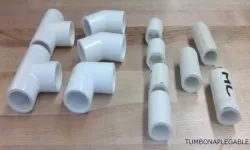
PVC ELBOWS: Types, Prices and Dimensions

LABORATORY EQUIPMENT: Names and Functions

WATERPROOF GLUE For Wood and Plastic
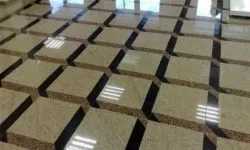
FLOORING AND TILES

ADHESIVE TILES: Prices, Brands and Types or Models
Sander Tools in ALPHAPEDIA
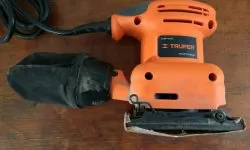
ORBITAL TRUPER SANDER: Great Price on Qualified Products

ORBITAL BLACK AND DECKER SANDER: Great Price on Qualified Products
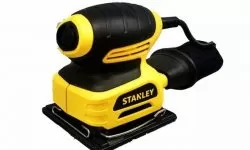
ORBITAL STANLEY SANDER: Great Price on Qualified Products

ACCESSORIES FOR Orbital and Drill SANDING MACHINES

DEWALT ORBITAL SANDER: Great Price on Qualified Products
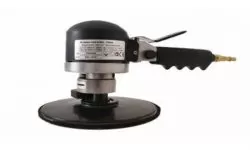
ORBITAL SANDER: Models and Brands like Dewalt, Bosch and Makita
Other Topics of Interest in ALPHAPEDIA

BANANA: Benefits, Properties and Contraindications

FREE BACHELOR DEGREE IN CHIROPRACTIC

FREE MASTER DEGREE IN PUBLIC ADMINISTRATION

FREE INDUSTRIAL ROBOTICS COURSE

FREE BACHELOR DEGREE IN HUMAN TALENT

¿ HOW TO CLEAN GRANITE FLOORS ?
Image of Sandpaper
